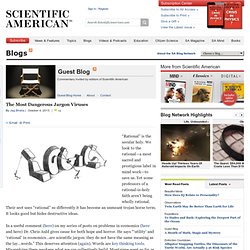

Behind the Scenes of “Box”– Mixing Design, Storytelling and Technology. That mesmerizing installation of light and illusion using 3D projection mapping and robots, Box, that I shared with you last week, left me a bit unsettled.

Why? Because, as I watched, I kept asking myself in my mind, “HOW DID THEY DO THAT?” Instead of sitting back and enjoying it. (I’ve been often accused of being too curious, but I think that suits the scientist in me just fine. ) Here is the Box performance as a reminder. And, as if they knew people like me exist, they created a “Behind the Scenes” follow-up with plenty of explanation. “A behind the scenes look at Box, Bot & Dolly’s wildly popular latest live performance film which documents a first-ever live synchronized performance using 3D projection mapping, robots, and actors. In this exclusive documentary, The Creators Project provides a detailed exploration of the technical and creative processes behind Box.” Definitely looking forward to more from Bot and Dolly! My Problem with “Taboo” Behavioral Genetics? The Science Stinks!
Last spring, I kicked up a kerfuffle by proposing that research on race and intelligence, given its potential for exacerbating discrimination, should be banned.

Now Nature has expanded this debate with “Taboo Genetics.” The article “looks at four controversial areas of behavioral genetics”—intelligence, race, violence and sexuality—”to find out why each field has been a flashpoint, and whether there are sound scientific reasons for pursuing such studies.” Behavioral genetics has failed to produce robust evidence linking complex traits and disorders to specific genes. The essay provides a solid overview, including input from both defenders of behavioral genetics and critics. #Dysonfest: Origin of life, climate change (denial), number theory and nuclear weapons. The Scicurious Brain. Man’s new best friend? A forgotten Russian experiment in fox domestication.
Dmitri K.

Belyaev, a Russian scientist, may be the man most responsible for our understanding of the process by which wolves were domesticated into our canine companions. Dogs began making for themselves a social niche within human culture as early as 12,000 years ago in the Middle East. But Belyaev didn’t study dogs or wolves; his research focused instead on foxes. What might foxes be able to tell us about the domestication of dogs? Domesticated animals of widely different species seem to share some common traits: changes in body size, in fur coloration, in the timing of the reproductive cycle. The Most Dangerous Jargon Viruses. “Rational” is the secular holy.

We look to the rational—a most sacred and prestigious label in mind work—to save us. Yet some professors of a rational-is-holy faith aren’t being wholly rational. Their sect uses “rational” so differently it has become an unmeant trojan horse term. It looks good but hides destructive ideas. In a useful comment (here) on my series of posts on problems in economics (here and here) Dr. Untitled. Physics Week in Review: October 5, 2013. This week, Quanta kicked off a five-part series on science and big data, starting with Imagining Data Without Division.

Part 2: A Digital Copy of the Universe, Encrypted. As physics prepares for ambitious projects like the Large Synoptic Survey Telescope, the field is seeking new methods of data-driven discovery. Part 3 is my article on the Mathematical Shape of Things to Come. Scientific data sets are becoming more dynamic, requiring new mathematical techniques on par with the invention of calculus. Part 4 and Part 5 will appear next week. Related: Big Data is revolutionizing 21st-century business without anybody knowing what it actually means. Carnot's theorem (thermodynamics) Carnot's theorem, developed in 1824 by Nicolas Léonard Sadi Carnot, also called Carnot's rule, is a principle that specifies limits on the maximum efficiency any heat engine can obtain, which thus solely depends on the difference between the hot and cold temperature reservoirs.

Carnot's theorem states: All heat engines between two heat reservoirs are less efficient than a Carnot engine operating between the same reservoirs.Every Carnot engine between a pair of heat reservoirs is equally efficient, regardless of the working substance employed or the operation details. The formula for this maximum efficiency is where TC is the absolute temperature of the cold reservoir, TH is the absolute temperature of the hot reservoir, and the efficiency is the ratio of the work done by the engine to the heat drawn out of the hot reservoir.
#SciAmBlogs Friday – Test-Tube Burger, Sea Otter Cam, Behavioral Genetics, #Dysonfest, Jargon Viruses, and more. The Lustful Human Animal: Cultural Differences in Sexual Harm and Consent. Surplus fossil fuels make it even harder to stay within our carbon budget. Oil production in the Bakken Shale (Dana Schagunn/iStockphoto) Kevin Bullis has written a smart piece at MIT Technology Review about how mankind is likely to blow by the 1-trillion ton carbon budget.

Realistically, it will be difficult to stay within budget and avoid warming beyond 2C (what is generally considered the threshold). Based on previous large-scale energy transitions (Bullis cites the French transition to nuclear over several decades), it is a slow and difficult process. Time we might not have: Myles R.